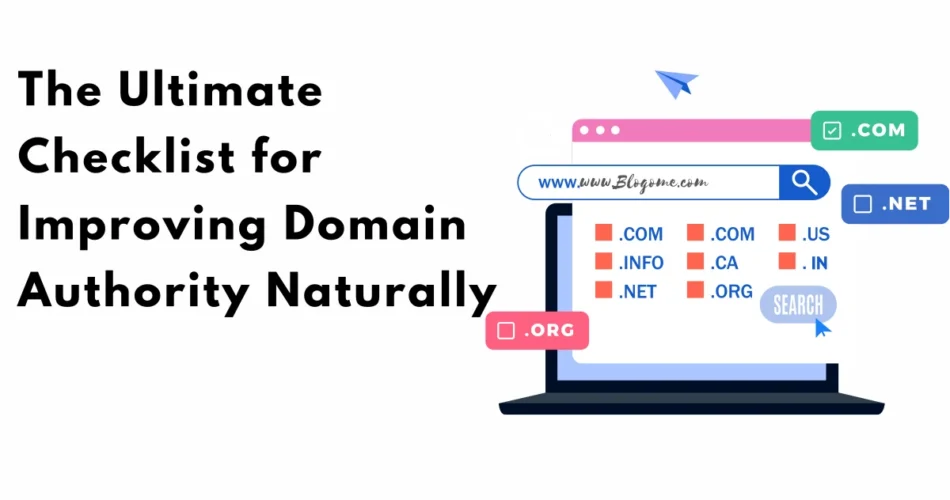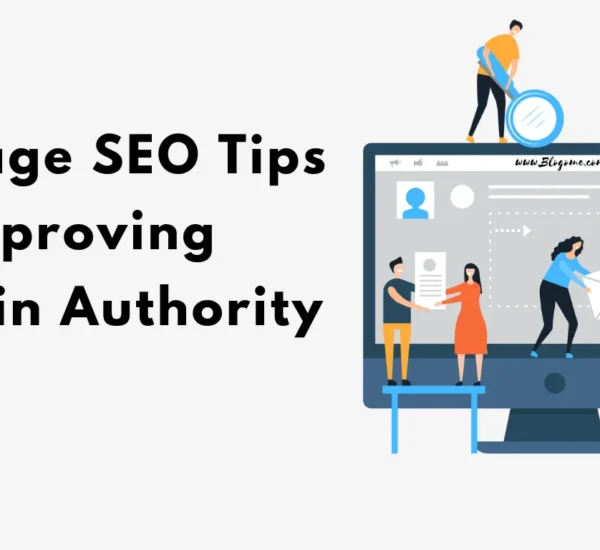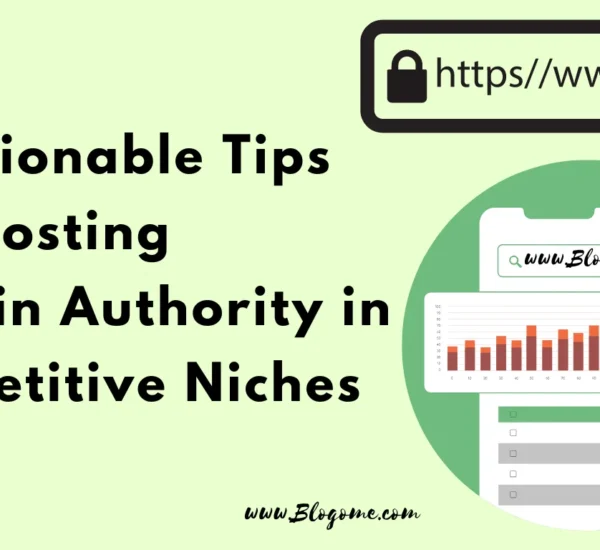Introduction
In the vast digital marketing realm, Domain Authority (DA) is a critical metric that website owners and SEO professionals closely monitor. Created by Moz, DA is a score ranging from 1 to 100 that predicts how well a website will rank on search engine result pages (SERPs). The higher your DA, the greater your potential to rank higher on SERPs, leading to increased organic traffic and visibility.
Improving DA is not just about manipulating search engine algorithms but also establishing a credible and authoritative online presence. Higher DA can lead to improved website visibility, greater trust from users and search engines, and ultimately, more traffic and conversions. However, it’s crucial to focus on natural, ethical methods to enhance your DA, as opposed to black hat techniques that may offer short-term gains but can result in long-term penalties.
This comprehensive checklist will guide you through the essential steps to naturally improve your Domain Authority, ensuring sustainable growth and a solid foundation for your website’s future.
1. High-Quality Content Creation
Importance of Original, Valuable, and Relevant Content
Content is the cornerstone of any successful SEO strategy. High-quality, original, and valuable content not only attracts visitors but also encourages other websites to link back to you, thereby improving your DA. Your content should address the needs and interests of your target audience, providing solutions, insights, and information that they find useful and engaging.

Strategies for Creating Evergreen Content
Evergreen content remains relevant and valuable over time, continuing to attract traffic long after it’s published. To create evergreen content:
- Identify Timeless Topics: Focus on subjects that are not tied to current events but have ongoing relevance.
- In-Depth Guides and How-To Articles: Provide comprehensive information that covers a topic thoroughly.
- Update Regularly: Ensure your evergreen content remains current by periodically updating it with new information and insights.
Utilizing Various Content Types
Diversifying your content types can keep your audience engaged and appeal to different preferences. Consider incorporating:
- Blogs: Regular blog posts keep your website active and offer fresh content for search engines to index.
- Videos: Engaging and easily digestible, videos can explain complex topics in a more accessible way.
- Infographics: Visual representations of information can simplify complex data and are highly shareable on social media.
2. On-Page SEO Optimization
Optimizing Title Tags, Meta Descriptions, and Headers
On-page SEO is crucial for improving your Domain Authority. Start with:
- Title Tags: Ensure your titles are descriptive, include target keywords, and are compelling enough to attract clicks.
- Meta Descriptions: Write concise and engaging meta descriptions that summarize the page content and include relevant keywords.
- Headers (H1, H2, H3, etc.): Use headers to structure your content, making it easier for readers and search engines to understand the main topics and subtopics.

Using Keywords Effectively Without Keyword Stuffing
Keywords are vital for SEO, but their misuse can lead to penalties. To use keywords effectively:
- Research and Select Relevant Keywords: Use tools like Google Keyword Planner or Ahrefs to find keywords relevant to your content.
- Natural Integration: Integrate keywords naturally into your content, ensuring they fit seamlessly into the text.
- LSI Keywords: Use Latent Semantic Indexing (LSI) keywords, which are related terms and phrases that help search engines understand the context of your content.
Ensuring Mobile-Friendliness and Fast Loading Times
With mobile devices accounting for a significant portion of web traffic, ensuring your website is mobile-friendly is critical. Additionally, site speed is a ranking factor for Google. To optimize for both:
- Responsive Design: Use responsive web design to ensure your site displays correctly on all device types.
- Optimize Images and Files: Compress images and minify CSS, JavaScript, and HTML to improve loading times.
- Use a Content Delivery Network (CDN): Distribute your content across multiple servers to reduce load times and improve user experience.
3. Building Quality Backlinks
Importance of Backlinks for Domain Authority
Backlinks are links from other websites to your own, and they are a significant factor in improving your DA. High-quality backlinks signal to search engines that your content is valuable and trustworthy, thereby boosting your site’s authority.
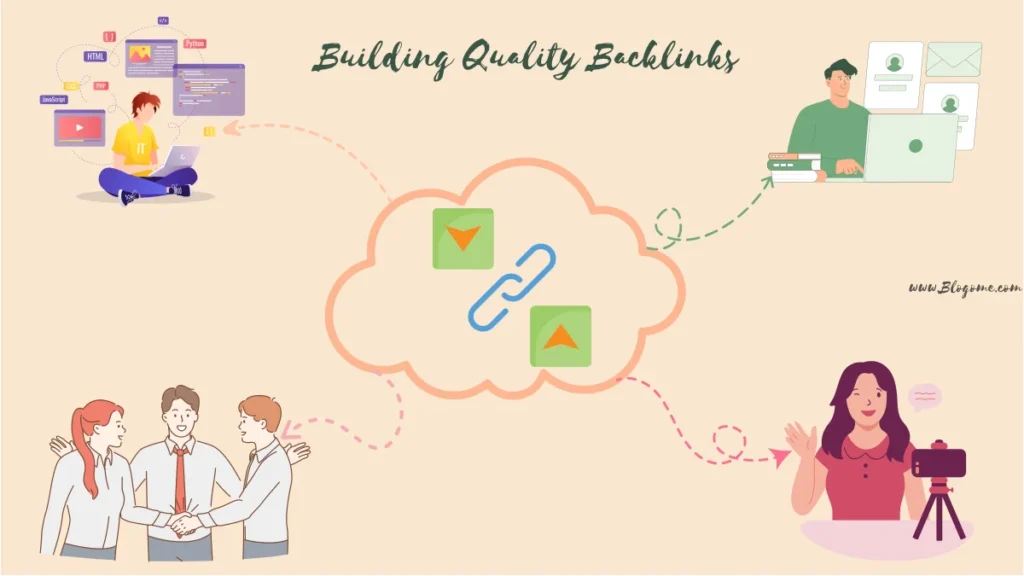
Strategies for Acquiring High-Quality Backlinks
Guest Posting
Guest posting involves writing articles for other websites in your industry. This not only helps you reach a broader audience but also earns you valuable backlinks. To effectively guest post:
- Identify Reputable Sites: Target websites with high Domain Authority and relevance to your niche.
- Create High-Quality Content: Provide well-researched, engaging, and original content that adds value to the host site.
Collaborations and Partnerships
Building relationships with other websites and influencers in your industry can lead to natural backlink opportunities. Consider:
- Collaborative Projects: Co-authoring content, conducting joint webinars, or producing research studies.
- Influencer Outreach: Partnering with influencers to create content or share your existing content with their audience.
Outreach to Relevant Websites and Influencers
Proactive outreach involves contacting relevant websites and influencers to promote your content. Effective outreach strategies include:
- Personalized Emails: Tailor your outreach emails to highlight the mutual benefits of linking to your content.
- Value Proposition: Clearly explain why your content is valuable and how it can benefit their audience.
4. Internal Linking Structure
Benefits of a Good Internal Linking Strategy
Internal linking helps distribute page authority across your site, making it easier for search engines to crawl and index your pages. It also helps users navigate your site more effectively, improving their overall experience.
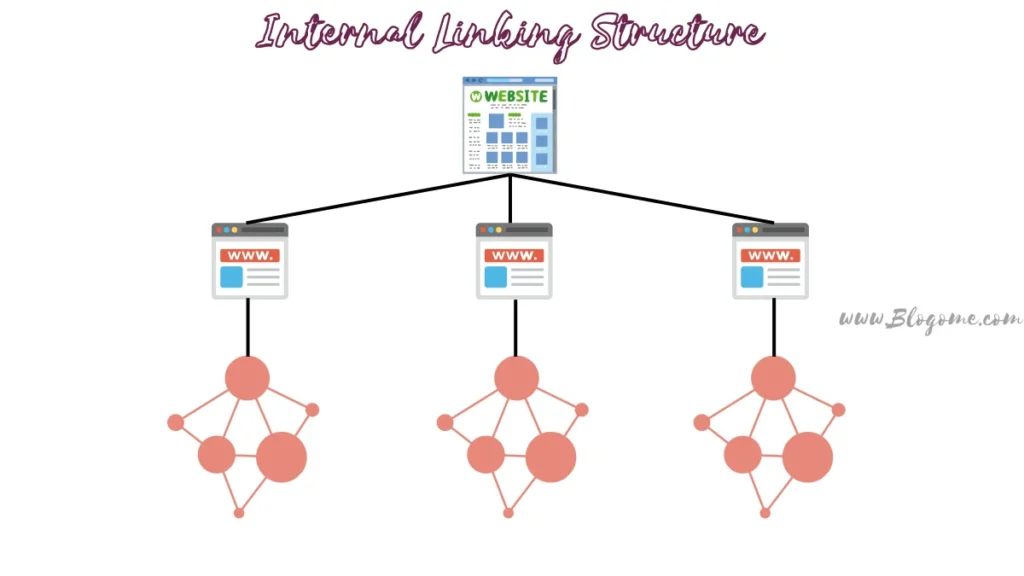
Tips for Creating an Effective Internal Linking Plan
- Use Descriptive Anchor Text: Ensure your anchor text is relevant and descriptive, providing context for both users and search engines.
- Link to Relevant Content: Only link to pages that are related to the content at hand to maintain relevance and value.
- Balanced Distribution: Ensure an even distribution of internal links across your site to avoid overloading certain pages with too many links.
Tools for Managing Internal Links
There are several tools available to help manage your internal linking structure, including:
- Google Search Console: Provides insights into your internal link structure and highlights any issues.
- Yoast SEO: A popular WordPress plugin that offers internal linking suggestions and analysis.
- Screaming Frog: A website crawler that helps you audit your internal links and identify opportunities for improvement.
5. Improving User Experience (UX)
The Role of UX in SEO and DA
User experience is a crucial factor in SEO and Domain Authority. A positive user experience can lead to longer visit durations, lower bounce rates, and higher engagement, all of which can indirectly boost your Domain Authority.
Ensuring the Website is User-Friendly and Easy to Navigate
- Clear Navigation: Ensure your website’s navigation is intuitive and easy to use, helping visitors find what they’re looking for quickly.
- Readable Content: Use clear fonts, proper formatting, and adequate spacing to make your content easy to read.
- Engaging Design: Use a clean, visually appealing design that enhances the user experience without overwhelming visitors.

Importance of Site Speed and Responsiveness
Site speed and responsiveness are critical for both UX and SEO. To optimize these aspects:
- Accelerated Mobile Pages (AMP): Implement AMP to improve mobile page load times.
- Browser Caching: Use browser caching to store static resources locally, reducing load times for repeat visitors.
- Server Optimization: Choose a reliable hosting provider and optimize your server settings to enhance performance.
6. Social Media Engagement
How Social Signals Can Impact DA
While social signals (likes, shares, comments) are not direct ranking factors, they can indirectly influence your Domain Authority by driving traffic, increasing visibility, and generating backlinks.
Strategies for Effective Social Media Marketing
- Consistent Posting: Maintain a regular posting schedule to keep your audience engaged.
- Engaging Content: Share a mix of content types (articles, videos, infographics) to keep your social media profiles interesting.
- Interactivity: Engage with your audience by responding to comments, participating in discussions, and hosting live sessions.

Encouraging Social Sharing of Your Content
To boost social sharing:
- Share Buttons: Add social sharing buttons to your content to make it easy for visitors to share.
- Compelling CTAs: Use calls-to-action (CTAs) to encourage readers to share your content with their networks.
- Incentives: Offer incentives such as contests or giveaways to motivate users to share your content.
7. Technical SEO
Importance of a Solid Technical Foundation
Technical SEO involves optimizing your website’s infrastructure to ensure it is easily crawlable and indexable by search engines. A solid technical foundation is essential for improving your Domain Authority and overall SEO performance.
Fixing Broken Links and Errors
Broken links and errors can harm your user experience and SEO. To address these issues:
- Regular Audits: Conduct regular site audits to identify and fix broken links and errors.
- 301 Redirects: Use 301 redirects to permanently redirect broken links to relevant pages.
- Error Pages: Create custom 404 error pages to guide users back to functional parts of your site.

Using XML Sitemaps and Robots.txt Files Effectively
XML sitemaps and robots.txt files help search engines understand and navigate your site. Ensure:
- XML Sitemap: Include all important pages and update them regularly to reflect changes to your site.
- Robots.txt: Use the robots.txt file to guide search engine crawlers, blocking them from indexing unnecessary or duplicate pages.
8. Consistent Monitoring and Analysis
Tools for Tracking DA and Overall SEO Performance
Monitoring your Domain Authority and SEO performance helps you identify areas for improvement. Useful tools include:
- Moz: Track your Domain Authority and other SEO metrics.
- Google Analytics: Monitor traffic, user behavior, and conversion rates.
- Ahrefs: Analyze backlinks, track keyword rankings, and audit your site.
Regularly Updating and Auditing Your Content
Regular updates and audits ensure your content remains relevant and high-quality. To do this:
- Content Refresh: Update outdated information, add new insights, and improve readability.
- Content Audit: Periodically review your content to identify gaps, remove low-performing pages, and consolidate similar content.
Adapting Strategies Based on Performance Data
Analyze your performance data to adapt and refine your strategies:
- Identify Trends: Look for patterns in your data to understand what works and what doesn’t.
- Iterative Improvements: Continuously tweak and improve your strategies based on data insights.
- A/B Testing: Conduct A/B tests to determine the most effective tactics for your audience.
Conclusion
Improving your Domain Authority naturally is a multifaceted process that requires dedication, strategic planning, and continuous effort. By focusing on high-quality content, optimizing your on-page and technical SEO, building quality backlinks, and enhancing user experience, you can gradually and sustainably increase your Domain Authority.
Call to Action
Start implementing this ultimate checklist today and watch your Domain Authority grow. Share your progress and experiences in the comments below, and don’t forget to download the PDF version of this checklist for easy reference. Stay committed to natural, ethical methods, and enjoy the long-term benefits of a higher DA and improved online presence.


